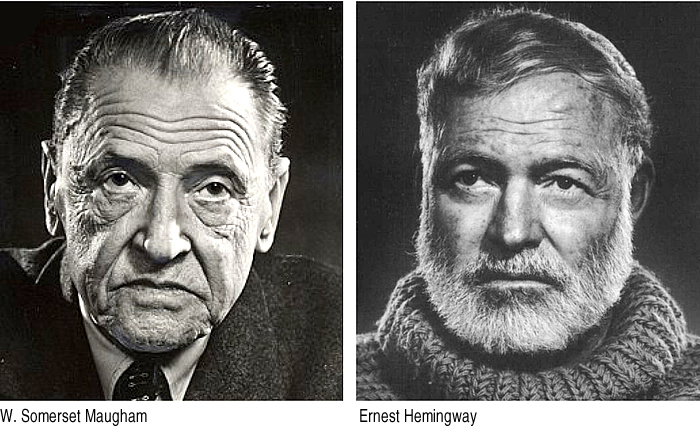
Ed Henninger, design
ED HENNINGER is an independent newspaper consultant and the director of Henninger Consulting.
Website: www.henningerconsulting.com
Phone: (803) 327-3322
WANT A FREE evaluation of your newspaper’s design?
Just contact Ed: edh@henningerconsulting.com | (803) 327-3322
IF THIS COLUMN has been helpful, you might be interested in Ed’s books: “Henninger on Design” and “101 Henninger Helpful Hints.” With the help of Ed’s books, you’ll immediately have a better idea how to design for your readers. Find out more about “Henninger on Design” and “101 Henninger Helpful Hints” by visiting Ed’s website: www.henningerconsulting.com

Ernest Hemingway: “There is nothing to writing. All you do is sit down at a typewriter and bleed.”
W. Somerset Maugham: “There are three rules for writing well. Unfortunately, no one knows what they are.”
William Zinsser: “Our job is to distill the essence.”
Ed Henninger: “News writers need all the help they can get … and most don’t get it.”
No, I don’t dare think of putting myself on the same level as Hemingway, Maugham and Zinsser.
What I am trying to point out with my quote above is that the state of writing in newspapers is directly proportional to the amount of editing and direction that writers receive.
I do not consider myself a friend of writers. Nor do I think of myself as a friend of editors or designers. I have always tried to be a friend — no, actually a champion — of readers. During my entire career in newspapers (now nearing 50 years), I have clung tenaciously to the tenet that the reader must be the focus of everything we do. I still feel that way.
I believe, as Zinsser states in his marvelous book, “On Writing Well,” that we are “ … in the business of bringing meaning to readers’ lives.”
Too many writers, unfortunately, believe that we are in the business of writing. Some, in fact, have told me just that.
I don’t blame them for thinking that. Too few of them have been told otherwise.
They have been allowed to believe that longer stories are better stories.
They have been allowed to write lead paragraphs that go on for word after word after word … and yet never seem to get to the point.
They’ve not been given any instruction or training in visual thinking.
They’ve rarely — if ever — been asked to provide an infobox to accompany their stories.
They’ve rarely — if ever — been asked to request photos or artwork (not even a headshot of their subject!) to go with a profile.
Writers become better at their craft when they’re given sound editing and informed direction. And it’s up to their editors and publishers to see that they get that.
Otherwise, many writers will continue to feel that it is the mission of their newspaper to let them “fulfill” themselves as writers.
To get better writing, better reporting, better editing and better design, we have to train our writers. We need to help them realize that everything we do — writing included — is up for evaluation, and that everything we do is for … the … reader.
